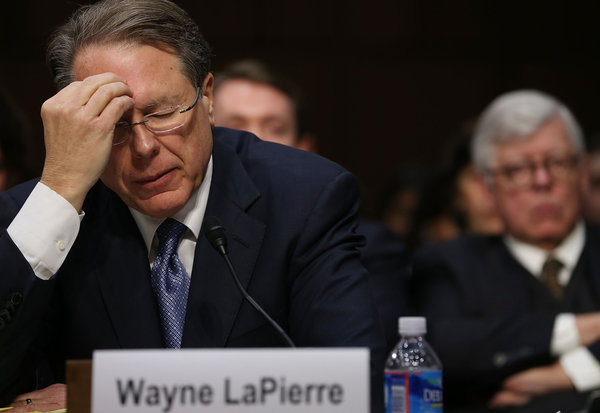 You won’t learn it from mainstream media coverage, but the idea that tighter gun control will cure the nation’s epidemic of mass shootings is as bogus as Manti Te’o’s girlfriend.
You won’t learn it from mainstream media coverage, but the idea that tighter gun control will cure the nation’s epidemic of mass shootings is as bogus as Manti Te’o’s girlfriend.
Why is gun control not the solution? Because guns are not the problem.
The real reason people shoot (or otherwise harm) others is either that they have been conditioned to see violence as an acceptable solution to their discontents, or that they are under the influence of medications that can dispose them to violence. Or both. The entertainment media’s glamorizing of aggressive behavior provides the conditioning, and irresponsible marketing and dispensing of prescription drugs provide the urge.
I’ll present the evidence for both assertions in a moment, but first let me address the reaction the previous paragraph is sure to trigger in some people even more quickly than saliva formed in the mouth of Pavlov’s dog.
I am not a shill for the gun lobby. In fact, though I spent my childhood playing cops and robbers and cowboys and Indians (may God forgive me), I have never been a member of the NRA or a hunter. Moreover, I have never owned a gun, and I don’t intend to buy one now. That said, I do support the second amendment, I have no problem with law-abiding citizens exercising the rights it guarantees, and when an honest person with a gun thwarts a criminal, I don’t moan about the availability of guns—I applaud.
Let’s begin with the evidence of the link between violent entertainment and actual violence. Hollywood propaganda is designed to persuade us that there is no such evidence. In fact, however, research over the years has produced volumes of indisputable evidence.
Here are two studies that are noteworthy because they summarize hundreds of other studies:
In The Early Window (1988), Robert Liebert and Joyce Sprafkin reviewed hundreds of research studies on the effects of TV violence. In addition they examined several other research reviews. One of those reviews pooled the findings of 67 separate studies conducted over a twenty-year period. Another examined 230 studies. These research reviews agreed in concluding that there is a clear and unmistakable “causal relationship” between the viewing of TV violence and antisocial behavior and attitudes.
In Adolescents and the Media (1995), Victor Strasburger identified “more than 1,000 studies and reviews in the literature [that] point to media violence as one cause of real-life violence,” and noted that one researcher concluded that “long-term exposure to television is a causal factor in approximately half of all homicides in the United States; therefore, 10,000 homicides could be prevented annually if television were less violent.”
Since these studies were published, video games have not only increased young people’s exposure to gratuitous violence but also made them virtual perpetrators in the course of playing the games.
Now let’s consider the evidence for link between prescription drugs and violence:
In 2010, three researchers—Thomas J. Moore of the Institute for Safe Medication Practices, Joseph Glenmullen of Harvard University, and Curt Furberg of Wake Forest University—published a study titled “Prescription Drugs Associated with Reports of Violence Toward Others.” The study, conducted over a five-year period, identified 31 drugs with a “disproportionate association with violence.” Many of those drugs are prescribed for common conditions such as tobacco addiction, depression, and attention deficit disorder. The researchers concluded that “[the] data provide new evidence that acts of violence toward others are a genuine and serious adverse drug event that is associated with a relatively small group of drugs.” The report identifies the drugs by name and includes references to 22 related studies and scholarly articles.
Given the amount and quality of this evidence and its suggestion that the entertainment and pharmaceutical industries at very least contribute significantly to the problem of violent behavior, it is astounding that many media agencies and elected officials are singularly fixated on regulating guns and gun ownership. Indeed, they seem to stumble over one another to see who can issue the strongest condemnation of guns while saying virtually nothing about the real problems.
This fixation on guns led the Rockland County Journal News to publish the names and addresses of legal gun owners and thereby put them in danger. The same fixation caused the New York State legislature, at Governor Andrew Cuomo’s insistence, to hurriedly draft a bill tightening the state’s restrictions on guns. (After signing it into law, Cuomo was embarrassed to learn that its restriction on the number of bullets per magazine criminalized police weapons.)
The same fixation led President Obama to issue 23 executive orders on gun safety in January 2013. How many of those orders addressed the problem caused by the entertainment and pharmaceutical industries? Not a single one!
The President spoke of the need to “challenge old assumptions in order to lessen the prospect of such violence in the future.” But he did so while clinging to the old assumption that guns are solely to blame for violence. He then declared movingly that “if there is even one step” that can be taken to save a life, “then surely we have an obligation to try.” But he did that while ignoring the lesson of research, quoted above, that “10,000 homicides could be prevented annually if television were less violent.” Save one but not ten thousand? Mmmm.
Some might say that it is unfair to suggest that journalists like those at the Journal News, governors like Andrew Cuomo, and the President of the United States should be aware of the research on the links between TV and drug-related violence and actual violence. I reject that idea. There is nothing unfair in expecting those who shape public opinion and/or create laws that impact hundreds of millions of people to know what they are talking about.
Elected officials have an army of aides whose job descriptions include researching issues so that official pronouncements reflect reality. If those aides have not done their jobs on the issue of the causes of violence, they should be fired. If they have done their jobs but their bosses have chosen to follow their personal fantasies rather than the facts, the bosses should be impeached.
That moral and intellectual blindness is a common human affliction is not exactly news. The prophet Jeremiah chastised those who have eyes but do not see and ears but do not hear or understand. And over the centuries a number of authors have been credited with this wise observation: “There are none so blind as those who will not see. The most deluded people are those who choose to ignore what they already know.”
It is bad enough when average people refuse to acknowledge thoroughly documented truths. When people elected to positions of power do so, it is much worse. And when they do so in matters related to our constitutional rights, we have good reason to be suspicious . . . and afraid.
Copyright © 2013 by Vincent Ryan Ruggiero. All rights reserved








